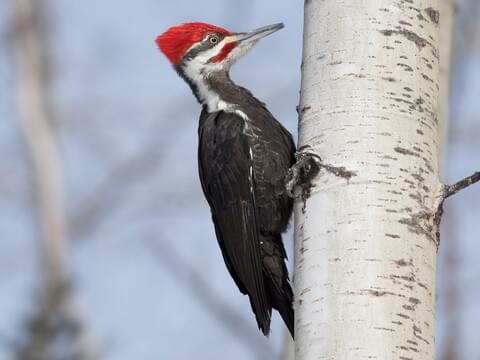Coming Across Woodpeckers in Florida Types: Environments and Actions
Coming Across Woodpeckers in Florida Types: Environments and Actions
Blog Article
Introducing the Secrets of Woodpeckers: Habits, Environment, and Extra
Woodpeckers, with their special behaviors and specialized adjustments, have actually lengthy amazed scientists and nature lovers alike. By discovering the mysteries bordering woodpeckers' habits and environment choices, a deeper understanding of these bird wonders emerges, supplying a peek into their fascinating globe.
Woodpecker Actions Insights
In checking out woodpecker habits, an interesting display of specialized abilities and adjustments emerges, shedding light on their impressive environmental niche - Woodpeckers in Florida. Woodpeckers, recognized for their distinct drumming on trees, possess a selection of behavior characteristics that add to their survival and success in their setting. One essential behavior is their drumming, which offers multiple objectives such as interaction, developing territory, bring in companions, and situating food sources. This balanced pecking likewise showcases their remarkable toughness and endurance, as they can hammer away constantly at broadband without triggering harm to themselves.
Furthermore, woodpeckers display an one-of-a-kind feeding habits identified by their ability to essence pests from tree bark using their specialized beaks. Their long, barbed tongues help in capturing target, while their strong neck muscle mass give stability and precision throughout pecking activities. This feeding strategy enables woodpeckers to accessibility hidden insect larvae and extract them with exceptional performance.
Environment Preferences and Choice
What elements influence the habitat preferences and selection of woodpeckers? One essential element influencing woodpecker environment option is the schedule of appropriate nesting sites. Woodpeckers usually choose woodlands with a mix of fully grown trees that supply sufficient opportunities for cavity excavation.
In addition, woodpeckers reveal a choice for habitats with an abundant supply of food resources. They are mostly insectivorous, eating beetles, ants, larvae, and other pests located in rotting wood or tree bark. Woodpeckers often tend to prefer wooded locations with a diverse insect population to meet their nutritional needs.
Additionally, the presence of dead or decaying trees is one more crucial variable you can try this out in woodpecker environment choice. These trees not only give food resources but likewise supply ideal substratum for tooth cavity excavation. Dead trees are essential for the upkeep of healthy and balanced woodpecker populaces, as they play an essential duty in the woodpeckers' life cycle and environment dynamics.
Feeding Practices and Diet Plan Make-up
Woodpeckers demonstrate a specialized feeding habits concentrated on foraging for pests within various environments. In enhancement to pests, woodpeckers also take in tree sap, fruits, nuts, and seeds, including selection to their diet regimen depending on the season and accessibility of food sources.
The foraging techniques of woodpeckers are well-adapted to their arboreal way of living. Woodpeckers play a critical duty in preserving the health of woodlands by managing insect populations and assisting in the disintegration of wood.
Drumming Sounds and Interaction
Using rapid drumming audios on different surfaces, woodpeckers use an unique form of interaction to indicate territory limits and attract friends. This drumming behavior is not just a way of interaction however also works as a way for woodpeckers to develop their existence within a certain area. The strength, speed, and pattern of the drumming can share crucial information to various other woodpeckers around.
Woodpeckers make use of drumming noises to introduce their existence in a region and to caution off possible trespassers. The loud and recurring nature of the drumming serves as a clear signal to various other woodpeckers that the area is already asserted. This helps in reducing disputes and minimizing physical conflicts in between individuals.

Survival Adaptations and Specialized Composition

Final Thought
To conclude, woodpeckers exhibit one-of-a-kind habits, such as drumming sounds for interaction, and have actually specialized anatomy for survival in their picked habitats. Their feeding routines and diet plan composition better demonstrate their flexibility to different environments. By recognizing these elements of woodpeckers, scientists and preservationists can better shield and protect these fascinating birds and their ecological communities.
Report this page